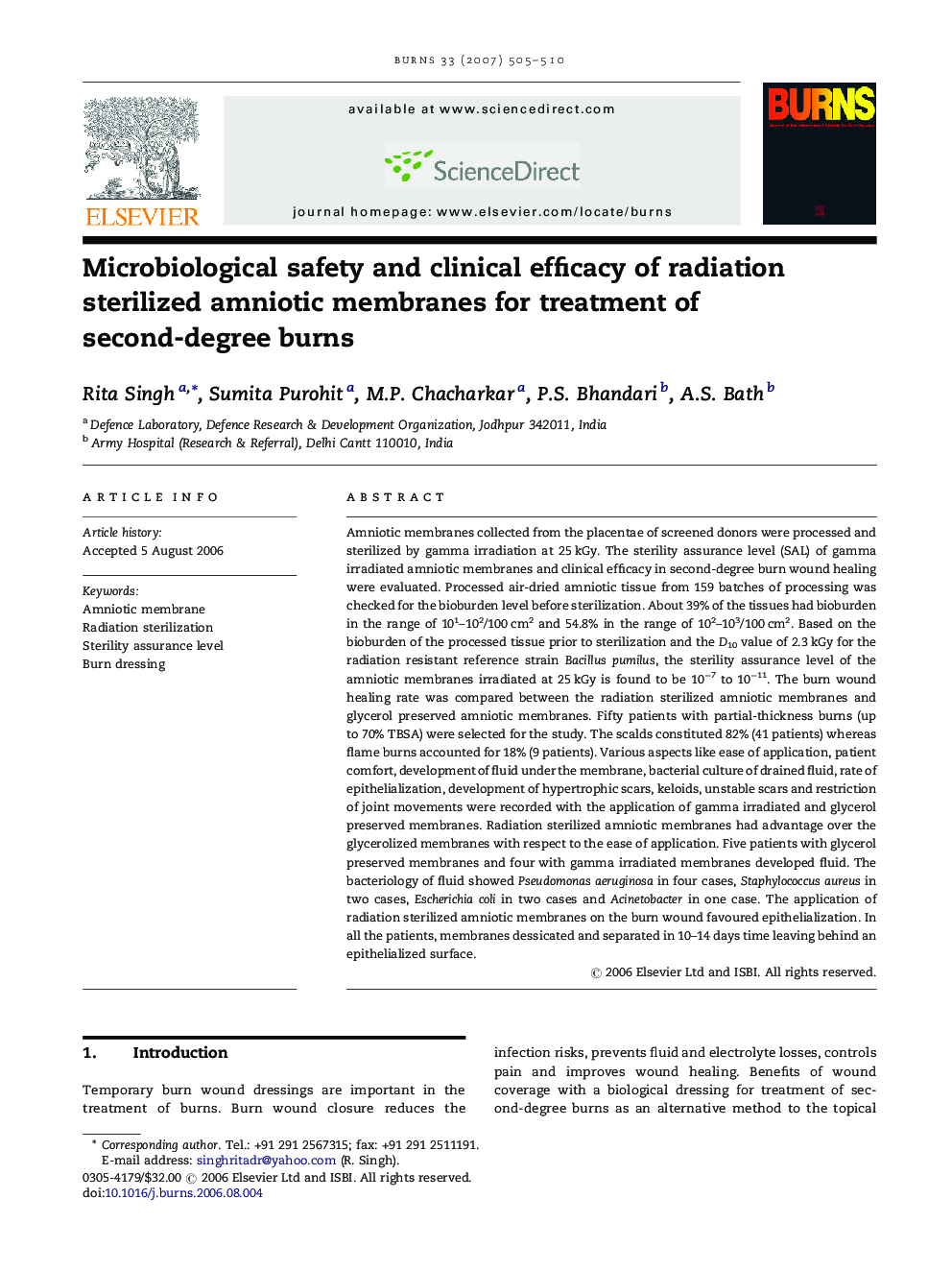| کد مقاله | کد نشریه | سال انتشار | مقاله انگلیسی | نسخه تمام متن |
|---|---|---|---|---|
| 3106621 | 1191725 | 2007 | 6 صفحه PDF | دانلود رایگان |

Amniotic membranes collected from the placentae of screened donors were processed and sterilized by gamma irradiation at 25 kGy. The sterility assurance level (SAL) of gamma irradiated amniotic membranes and clinical efficacy in second-degree burn wound healing were evaluated. Processed air-dried amniotic tissue from 159 batches of processing was checked for the bioburden level before sterilization. About 39% of the tissues had bioburden in the range of 101–102/100 cm2 and 54.8% in the range of 102–103/100 cm2. Based on the bioburden of the processed tissue prior to sterilization and the D10 value of 2.3 kGy for the radiation resistant reference strain Bacillus pumilus, the sterility assurance level of the amniotic membranes irradiated at 25 kGy is found to be 10−7 to 10−11. The burn wound healing rate was compared between the radiation sterilized amniotic membranes and glycerol preserved amniotic membranes. Fifty patients with partial-thickness burns (up to 70% TBSA) were selected for the study. The scalds constituted 82% (41 patients) whereas flame burns accounted for 18% (9 patients). Various aspects like ease of application, patient comfort, development of fluid under the membrane, bacterial culture of drained fluid, rate of epithelialization, development of hypertrophic scars, keloids, unstable scars and restriction of joint movements were recorded with the application of gamma irradiated and glycerol preserved membranes. Radiation sterilized amniotic membranes had advantage over the glycerolized membranes with respect to the ease of application. Five patients with glycerol preserved membranes and four with gamma irradiated membranes developed fluid. The bacteriology of fluid showed Pseudomonas aeruginosa in four cases, Staphylococcus aureus in two cases, Escherichia coli in two cases and Acinetobacter in one case. The application of radiation sterilized amniotic membranes on the burn wound favoured epithelialization. In all the patients, membranes dessicated and separated in 10–14 days time leaving behind an epithelialized surface.
Journal: Burns - Volume 33, Issue 4, June 2007, Pages 505–510